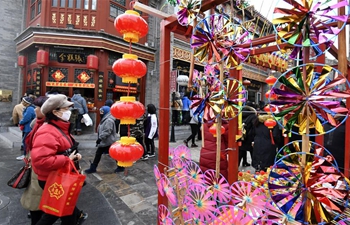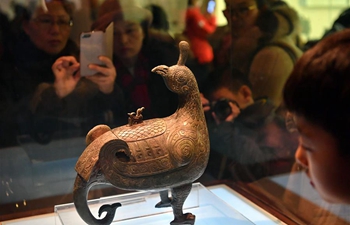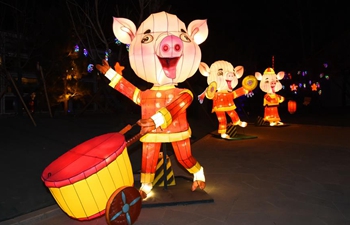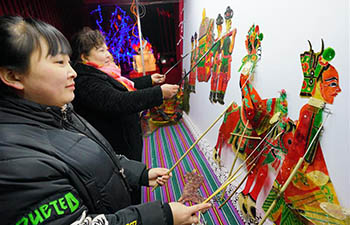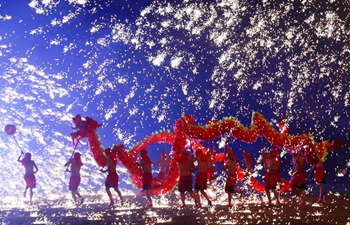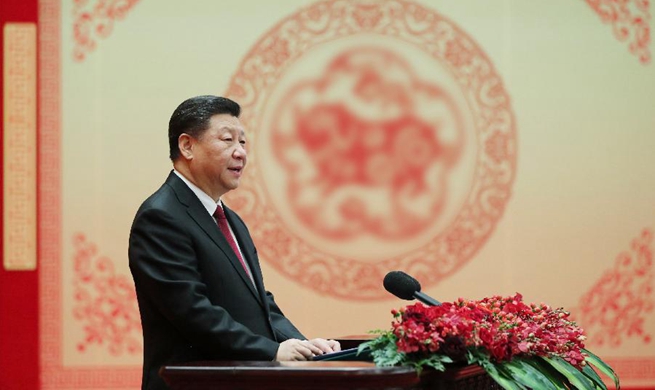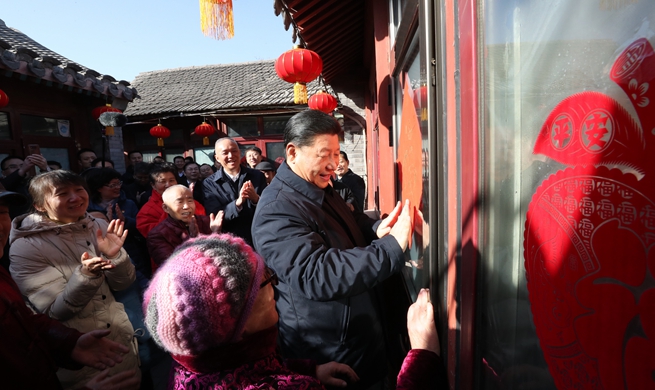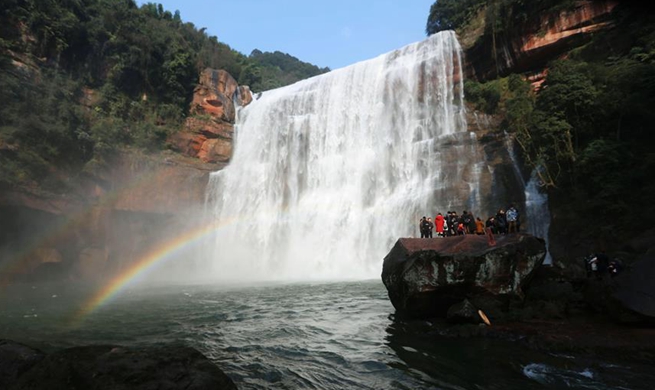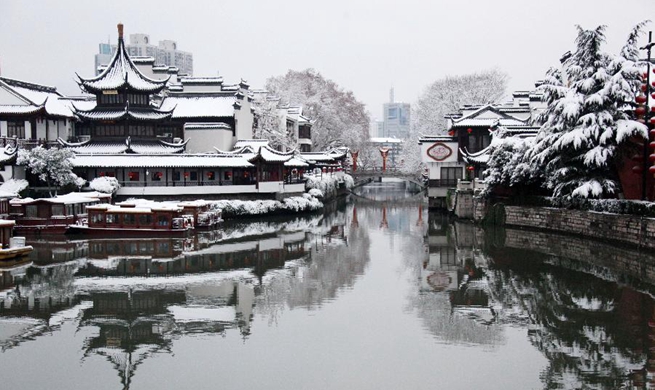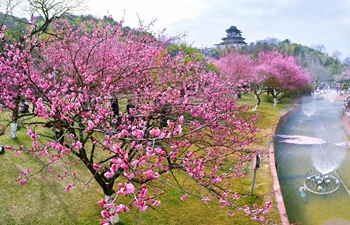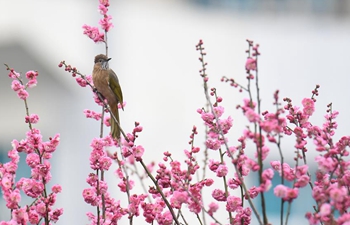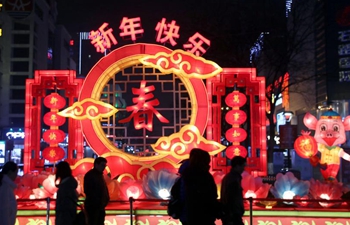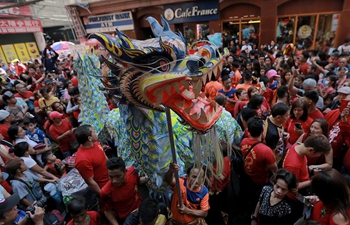XI'AN, Feb. 8 (Xinhua) -- Oops, they did it again!
The iconic terracotta warriors in China have hit the headlines once more. This time around, a face-changing warrior sculpture drew crowds on a street in northwest China.
The bust of a giant terracotta warrior was recently found in the city center in Xi'an, capital of Shaanxi Province. Different from the terracotta warrior army's stone faces, the sculpture's face seemed to be installed with high-tech lights, changing into different human faces as the lights varied.
The sculpture became an instant hit, with many tourists vying to take pictures with it.
Behind the warrior was a small room with a computer, a camera and a chair. Tourists could have their picture taken, which would then be processed and projected onto the face of the sculpture.
Many curious visitors tried the new experience by smiling, smirking or making faces in front of the camera, which was shown on the sculpture's face. While some of the online population praised the novel idea, some chastised it for "damaging traditional culture."
Jiao Yang, an official who helped build the project, said that their intention was "to help tourists feel Shaanxi's culture through entertainment and interaction."
Li Quansheng, the sculpture's chief designer, said he went to see the terracotta warriors once but found them too "poker-faced."
"The spin-off products on the market all have similar 'cold faces,'" Li said. "There is no fun or any interaction."
After being presented in the city center for a while, the sculpture has been moved to culture garden for improvement and will be displayed to the public at a later date.
Discovered in 1974, the army is one of China's biggest tourist attractions, drawing hundreds of thousands of visitors each year. It was built by Emperor Qinshihuang of the Qin Dynasty (221 B.C.-207 B.C.), who unified China for the first time.
This is not the first time the warriors have generated headlines recently.
Last month, a piece of terracotta warrior-shaped chocolate went viral after a user on microblog Sina Weibo uploaded a picture of a kneeling, dark-colored "chocolate knight." "Believe it or not, this is a piece of chocolate in Xi'an," said Weibo user Weikeduociwei. Some netizens even posted pictures of other terracotta warrior-shaped items in Xi'an, including a hotpot with sediment in the shape of the warriors. Also in January, a hotel in Xi'an caused a stir by offering life-sized terracotta sculptures in its rooms. The hotel owner, Guo Zhihua, placed more than 200 warrior replicas in the three hotel rooms. The sculptures, appearing to be watching attentively, are under the beds, in the wash basins, in front of toilet seats and in the walls. Tiles and pillowcases are also painted with images of the stern-faced soldiers.
"As the bed light shines through a specially-coated cover, the images of the warrior formations multiply so that the guests can feel like an emperor reviewing his troops," Guo said. Guo's rooms, which cost 100 to 200 U.S. dollars a night, have drawn thousands of visitors from 30 countries and regions since the hotel opened in 2008 when Beijing hosted the Summer Olympics. "I was banking on growing interest in Chinese history," Guo said. Xi'an is a popular tourist site. During the three-day New Year holiday, the city received 2.45 million tourists, up 17.16 percent year on year. Tourists spent 983 million yuan (146 million U.S. dollars), up 24.24 percent.




